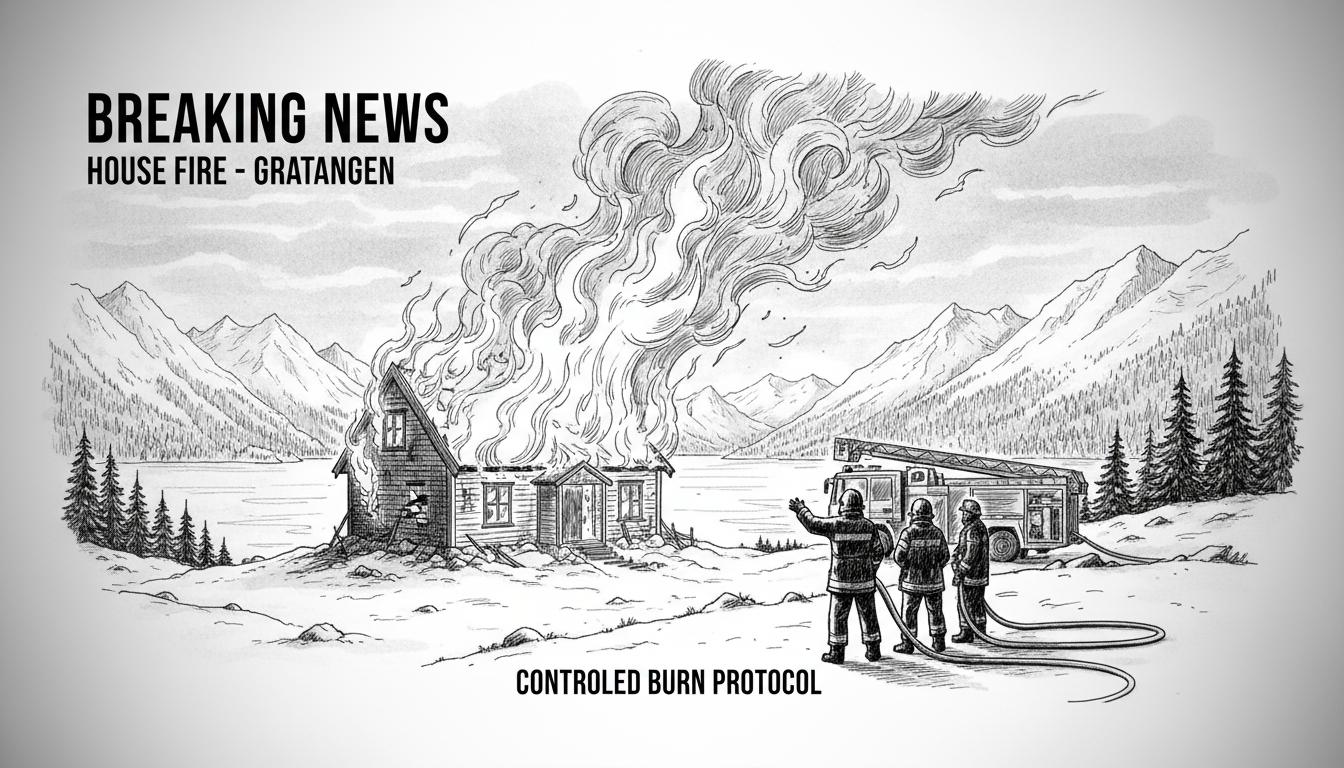A single-family home in Gratangen, Troms is completely engulfed in flames according to police reports. The fire reached full intensity around 5:47 PM local time. Authorities confirm the residence appears to be completely overtaken by the blaze.
Police officials state no one was inside the home during the incident. This information comes as some relief in what otherwise represents a total property loss. Emergency responders arrived quickly but faced challenging conditions.
Shortly after 6:00 PM, police determined the building could not be saved. They made the decision to proceed with a controlled burn operation. This approach allows firefighters to manage the blaze rather than risk it spreading uncontrollably.
Gratangen sits in Norway's Troms county, part of the broader Northern Norway region. This area experiences unique fire response challenges due to its Arctic location and scattered population centers. Remote homes often face longer emergency response times than urban properties.
Norwegian building codes emphasize fire safety, particularly in wooden structures common throughout rural Norway. Most homes feature multiple smoke detectors and fire extinguishers as standard equipment. Despite these precautions, rapid fire spread remains a concern in dry conditions.
What does controlled burning mean for firefighting operations? This technique involves containing the existing fire within its current boundaries while preventing expansion. Fire crews create defensive perimeters and monitor wind patterns closely. They sacrifice the original structure to protect surrounding buildings and natural areas.
Home insurance in Norway typically covers fire damage, but the emotional toll on property owners remains substantial. Losing a home represents more than just material loss in close-knit communities like Gratangen. Neighbors often provide immediate support through temporary housing and essential supplies.
The controlled burn approach reflects standard Norwegian emergency protocols for unrecoverable structures. Fire departments prioritize human safety above property preservation when structures become fully involved. This pragmatic decision-making prevents unnecessary risk to firefighters and nearby residents.
Local authorities will investigate the fire's cause once the situation stabilizes. Common origins include electrical faults, heating system malfunctions, or cooking accidents. Northern Norway's extreme temperature variations can sometimes contribute to infrastructure stress.
Winter conditions add complexity to fire response in Troms county. Icy roads may delay equipment arrival while frozen water sources require special access techniques. Firefighters train extensively for Arctic operations throughout the year.
The property owner will work with insurance representatives in coming days. Reconstruction decisions will consider current building standards and location-specific requirements. Many Norwegians choose to rebuild on their original properties despite the emotional difficulty.
This incident highlights the importance of regular home safety inspections in remote areas. Emergency services recommend checking smoke detectors monthly and maintaining clear escape routes. Simple precautions can mean the difference between minor damage and total loss.

